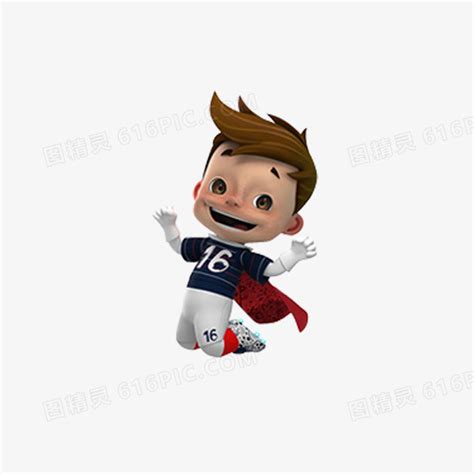欧洲杯吉祥物多少钱
Title: Creating a Memorable European Championship Mascot: Design and Symbolism
Creating a memorable and iconic mascot for the UEFA European Championship involves a careful blend of creativity, cultural relevance, and symbolism. Let's delve into the process of designing a Euro mascot and explore some key elements that contribute to its success.
1. Cultural Representation:
The mascot should reflect the diverse cultures and heritage of the host country or countries. It should resonate with football fans across Europe and evoke a sense of unity and inclusivity.
Incorporating elements such as national symbols, landmarks, traditional attire, or popular cultural references can help establish a strong connection with the host nation and its people.
2. Sporting Theme:
Since the mascot represents a football championship, it should embody the spirit of the sport. This can be achieved through its appearance, posture, and accessories.
Elements like a football jersey, cleats, or a football itself can instantly convey the sporting theme and reinforce the association with the tournament.
3. Appeal to Children and Families:
A successful Euro mascot should be appealing to children and families, as they are often a significant part of the tournament's audience. A friendly and approachable design is essential.
Bright colors, expressive facial features, and dynamic poses can make the mascot visually engaging and endearing to younger audiences.
4. Symbolism and Storytelling:
The mascot should tell a story or convey a message that resonates with the tournament's values and themes. Whether it's promoting teamwork, fair play, or celebrating the joy of football, there should be a deeper meaning behind the mascot's design.
Symbolic elements such as stars for excellence, a heart for passion, or a laurel wreath for victory can add layers of meaning to the mascot's visual representation.
5. Interactive and Versatile:
A versatile mascot design allows for various marketing and promotional opportunities. It should be adaptable to different mediums, such as merchandise, digital content, and live events.
Incorporating interactive features, such as animated expressions or playful gestures, enhances the mascot's appeal and encourages fan engagement both online and offline.
6. Iconic and Timeless:
A successful Euro mascot leaves a lasting impression and becomes an enduring symbol of the championship. It should stand the test of time and remain relevant even beyond the tournament itself.
Striking the right balance between contemporary design trends and timeless appeal ensures that the mascot remains iconic for years to come.
Conclusion:
Designing the perfect mascot for the UEFA European Championship is a creative journey that requires careful consideration of cultural, sporting, and symbolic elements. By incorporating these key factors into the design process, creators can craft a mascot that captures the imagination of football fans across Europe and leaves a lasting legacy for generations to come.
Creating a memorable and iconic mascot for the UEFA European Championship involves a careful blend of creativity, cultural relevance, and symbolism. Let's delve into the process of designing a Euro mascot and explore some key elements that contribute to its success.
1. Cultural Representation:
The mascot should reflect the diverse cultures and heritage of the host country or countries. It should resonate with football fans across Europe and evoke a sense of unity and inclusivity.
Incorporating elements such as national symbols, landmarks, traditional attire, or popular cultural references can help establish a strong connection with the host nation and its people.
2. Sporting Theme:
Since the mascot represents a football championship, it should embody the spirit of the sport. This can be achieved through its appearance, posture, and accessories.
Elements like a football jersey, cleats, or a football itself can instantly convey the sporting theme and reinforce the association with the tournament.
3. Appeal to Children and Families:
A successful Euro mascot should be appealing to children and families, as they are often a significant part of the tournament's audience. A friendly and approachable design is essential.
Bright colors, expressive facial features, and dynamic poses can make the mascot visually engaging and endearing to younger audiences.
4. Symbolism and Storytelling:
The mascot should tell a story or convey a message that resonates with the tournament's values and themes. Whether it's promoting teamwork, fair play, or celebrating the joy of football, there should be a deeper meaning behind the mascot's design.
Symbolic elements such as stars for excellence, a heart for passion, or a laurel wreath for victory can add layers of meaning to the mascot's visual representation.
5. Interactive and Versatile:
A versatile mascot design allows for various marketing and promotional opportunities. It should be adaptable to different mediums, such as merchandise, digital content, and live events.
Incorporating interactive features, such as animated expressions or playful gestures, enhances the mascot's appeal and encourages fan engagement both online and offline.

6. Iconic and Timeless:
A successful Euro mascot leaves a lasting impression and becomes an enduring symbol of the championship. It should stand the test of time and remain relevant even beyond the tournament itself.
Striking the right balance between contemporary design trends and timeless appeal ensures that the mascot remains iconic for years to come.
Conclusion:
Designing the perfect mascot for the UEFA European Championship is a creative journey that requires careful consideration of cultural, sporting, and symbolic elements. By incorporating these key factors into the design process, creators can craft a mascot that captures the imagination of football fans across Europe and leaves a lasting legacy for generations to come.



